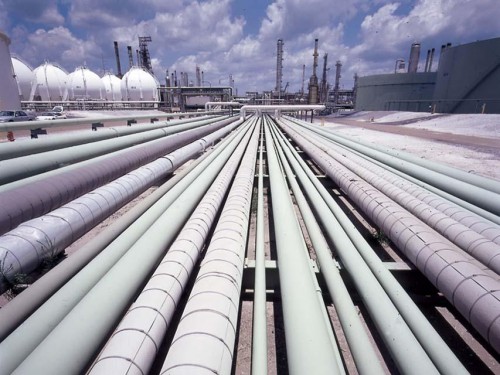
Louise "Toot" Marie Chiasson Fremin
October 7, 2008
Marie "Grum" Hartman Hebert
October 9, 2008One problem associated with performing construction jobs in south Louisiana that is often overlooked is the cost of moving oil and gas pipelines lying in the path of the work.
South Louisiana is full of them. Oil companies do not always know where they are exactly or whether the pipeline is active. Sometimes maps do not indicate that a pipe is indeed there.
The tangle of pipelines in south Louisiana is often referred to as the “Spaghetti Bowl.” The Mid-Continent Oil and Gas Association estimates that more than 11,000 miles of oil and gas pipelines exist in the state.
Others contend the length of pipelines existing in the state is not even known, but pipelines in south Louisiana transport 27 percent of the nation’s oil and 30 percent of its natural gas.
Many miles of pipeline run through Port Fourchon. They are owned by such companies as Shell, British Petroleum and Chevron.
In an oft-repeated statistic, the pipelines at Port Fourchon connect to half the nation’s refining capacity.
And as the Louisiana coastline erodes, pipelines are increasingly exposed to the air or sitting underwater instead of being buried in the muck.
Vessels traversing waterways can strike one of the pipelines. Are the signs saying, “Warning. Do not anchor or dredge. Oil pipeline.” sufficient?
(Not to mention the fact that the canals cut through marshes to lay the pipelines are one of the key causes of coastal erosion in the first place.)
Levee district officials are well aware of how oil pipelines can disrupt the building of levees.
“Oil pipelines are always an issue,” said Windell Curole, director of the South Lafourche and Terrebonne levee districts. “Relocating them is expensive.”
“The two main problems associated with building levees are moving pipelines and getting environmental permits,” he said.
Curole told of two frustrating instances involving levees and pipelines.
In one, a couple of segments of levee being built had to be put on hold while major gas pipelines were relocated. In another, the levee district was unsuccessful at receiving approval to move pipelines obstructing construction of a levee.
Levees are needed, of course, to protect the oil companies who laid the pipelines, Curole said.
“Levees support the oil industry,” he said. “That need is increasing in Terrebonne. Houma is threatened more often. The port (Fourchon) – they’re all dependent on levees.”
As may be expected, oil pipelines lie under the areas where the massive Morganza-to-the-Gulf hurricane protection levee system will be constructed.
Tony Alford, president of the Terrebonne levee board, said around 50 pipelines cross the land on which the Morganza levees will be built.
Alford said the district will use directional drilling to deal with the pipelines obstructing Morganza’s path. So far, oil companies have been cooperative, he said.
Not surprisingly, construction on the new Louisiana Highway 1 in southern Lafourche runs into pipelines that have to be moved.
The state contracted with the South Carolina engineering firm Wilbur Smith Associates to draw a map showing the route of LA 1 between Leeville and Golden Meadow.
The map also shows submerged pipelines.
Hundreds of underground pipelines cross the path of the new highway. Wilbur Smith must locate the owners of the pipelines before concrete can be laid.
“Some oil companies bought out one another,” said Henri Boulet, LA 1 Coalition director. “The company that (made) the purchase assumed control of the pipeline. Others went out of business. As from Leeville to Fourchon, we will address every pipeline crossing the new highway.”
Inactive pipelines will be moved. Active ones will need to be lowered.
(Oil pipelines generally range in diameter between eight and 45 inches and can transport oil at a speed of between five to eight miles an hour.)
Deepening an active pipeline is expensive, Boulet said. The cost of moving the pipelines for the new LA 1 is between $4 and $5 million.
For safety sake, Boulet said also that the pipelines will be laid at right angles to the new roadway, decreasing the amount of pipeline area near the roadway as much as possible.
Pipelines moving oil across south Louisiana line the coast. Often resembling a “spaghetti bowl,” moving the pipes could be an issue for Tri-parish officials as they erect hurricane protection levees. * File photo Tri-Parish Times











